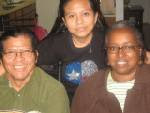
Introduction
Science—Douglas Florian makes studying sea animals fun with his style of poetry. Quiet the class. Explain that an animal’s name can have no relation to its physical appearance. Many of our sea creatures have unusual names.
Read two poems by Douglas Florian, “The Catfish” and “The Sea Horse.”
The Catfish
By Douglas Florian
I cannot purr.
I don’t have fur
Or claws or paws.
Don’t sleep in drawers.
I don’t chase mice.
Let that suffice.
I am a fish.
I have no wish
To be a cat.
That’s that!
The Sea Horse
By Douglas Florian
You have
No hooves.
You have no hair.
You don’t eat oats.
You don’t breathe air.
You hatch from eggs.
You cannot race.
(You have no legs
With which to chase.)
You’re not a colt
Nor mare
Nor filly.
You’re called a horse.
I call that silly.
Science—Douglas Florian makes studying sea animals fun with his style of poetry. Quiet the class. Explain that an animal’s name can have no relation to its physical appearance. Many of our sea creatures have unusual names.
Read two poems by Douglas Florian, “The Catfish” and “The Sea Horse.”
The Catfish
By Douglas Florian
I cannot purr.
I don’t have fur
Or claws or paws.
Don’t sleep in drawers.
I don’t chase mice.
Let that suffice.
I am a fish.
I have no wish
To be a cat.
That’s that!
The Sea Horse
By Douglas Florian
You have
No hooves.
You have no hair.
You don’t eat oats.
You don’t breathe air.
You hatch from eggs.
You cannot race.
(You have no legs
With which to chase.)
You’re not a colt
Nor mare
Nor filly.
You’re called a horse.
I call that silly.
Florian, Douglas. IN THE SWIM. Orlando: Harcourt, 1997.
 Extension
ExtensionHelp the children list other sea creatures (starfish, sawfish, jellyfish, dragon fish, and vampire squid) to write poems about and use their illustrations. Give the children a worksheet with rebus puzzles to name other fish. Children can also use rebus puzzles in their poems. (Science, literature, art and fun all tied together.)
Allow children to read Douglas Florian books you have on display, "In the swim," "Beast feast", and "Zoo's who."


